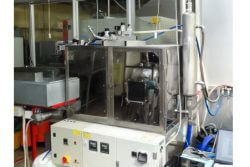On this page:
- Heat exchanger testing – introduction
- Heat exchanger ageing tests
- Testing internal and external corrosion and erosion of heat exchangers
- Freon emission tests – leak testing of automotive air conditioning systems
- Thermal efficiency
- Testing fan characteristics
- Metalographic examination of heat exchangers
- Resistance to water
- Electric fan testing
- Fatigue and durability testing of heat exchangers












































